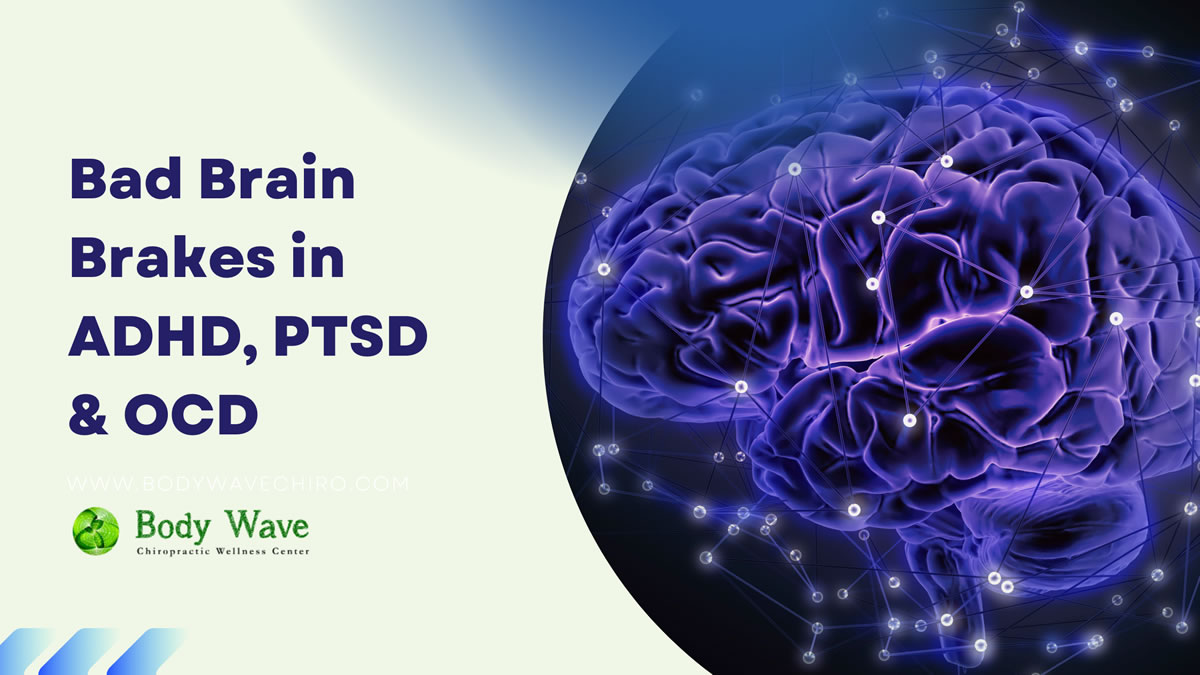
Hey Body Wave Community,
I recently completed another neurology-focused training (the 5th of an 8-part series). This one was a deep-dive look at how the brain gets stuck in the same direction for people with ADHD, PTSD, OCD and dystonia (movement disorders).
These seminars are 8-5 on a Saturday, but instead of feeling like work on a weekend, I’m left with way more energy after. It’s an added bonus that my good friend Angela (who practices in Poynette) is taking this series with me; we get to catch up and grab lunch together (sushi last time), and it’s helpful and fun to have someone to learn all this stuff with.
We sit all the way in the front of the room on the left side; I bring my good coffee from home and favorite snacks from the Co-op, along with lots of different color pens for drawing neurology tracks. Once settled in, I’m on the edge of my seat for the rest of the day. We started the day hearing stories like these:
A young high school girl whose emotions would constantly buildup, to where every 30 minutes she’d have to shake and cry to reset back to neutral. It was seriously interrupting her life. Or a boy who after not responding well to ADHD medication, developed tics and constant movements through his whole body. Now he has social challenges because other kids think it looks weird.

It’s so interesting to me, to understand what’s going on in the brain with these cases (the ones that aren’t so easy to solve). How have their brains gotten stuck? How can we help them get unstuck? Below are a few of my takeaways that may help you see what’s possible for yourself or others.
A few sentences right from class notes about what happens when the brakes fail to slow down this brain circuit (which creates an overactive motor system):
Called Hyperkinetic disorders: involve a lesion that results in the GPi failing to inhibit the thalamus. ADHD, OCD, Tourette’s, PTSD, dystonia, facial tics are all usually associated with this. Subclinical dysfunction of this system is VERY common and may be exacerbating or perpetuating issues that may seem unrelated. AND may result in a fragile system that could transition from subclinical to a clinical/ disabling condition if provoked by stressors.
Wow, right???
Bad brakes in this part of the brain cause people to have problems in one of these 4 related tracks (like 4 lanes of the same highway):
- Somatic: body movement (tics or tremors)
- Emotional: emotional expression (intense and frequent, getting stuck)
- Oculomotor: eye movement and attention (brain is not ready to focus)
- Associative: thought (stuck in the same thought loops)
Because of this overactive brain circuitry, you’re set to overreact to the world. These aren’t character flaws, but the way your brain is firing. Reminder that our behavior, how we show up in the world always matches the way our brain is processing things.
We reviewed the things you can do to get your brain ready to change, even before any chiro intervention. If these factors aren’t addressed, the person may experience limited improvement and spend their time managing vs. overcoming.
- Increase O2 of your neurons (breathing exercises help change the CO2/O2 ratio that your brainstem picks up. If this need isn’t met, neurons (brain cells) will be surviving and won’t have resources to reroute)
- Balance glucose levels (balancing your blood sugar, even if you’re not diabetic)
- Decrease overall inflammation (lots of ways to do this)
We reviewed many different varieties of neuro rehab exercises: Slow, boring, and repetitive movements and actions (geared to your brain) to activate that brake pedal. Find that sweet spot where you start to fail (able to pay attention or just doing it in general) and build from there. Activities at the end of the day that slow your brain down in general can help too. It can be life-changing to address this circuitry, if it’s behind the symptoms and holding them in place.
Overall takeaways:
1. If you don’t address the neurocircuitry that is keeping these problems in place (and you experiencing the world in the same way), it’ll be hard to get ahead.
2. It’s worth it to put in the effort to strengthen and protect your brain (create neuro-resilience) before you think you need to. Most neurodegenerative conditions have been brewing for decades before we start to see signs of decreased function.
Thanks for hanging with me through this fairly technical review – writing to you helps me organize my thoughts after learning. As always, let me know your questions in the comments below or at your next visit.
Best,
Dr. Laura
